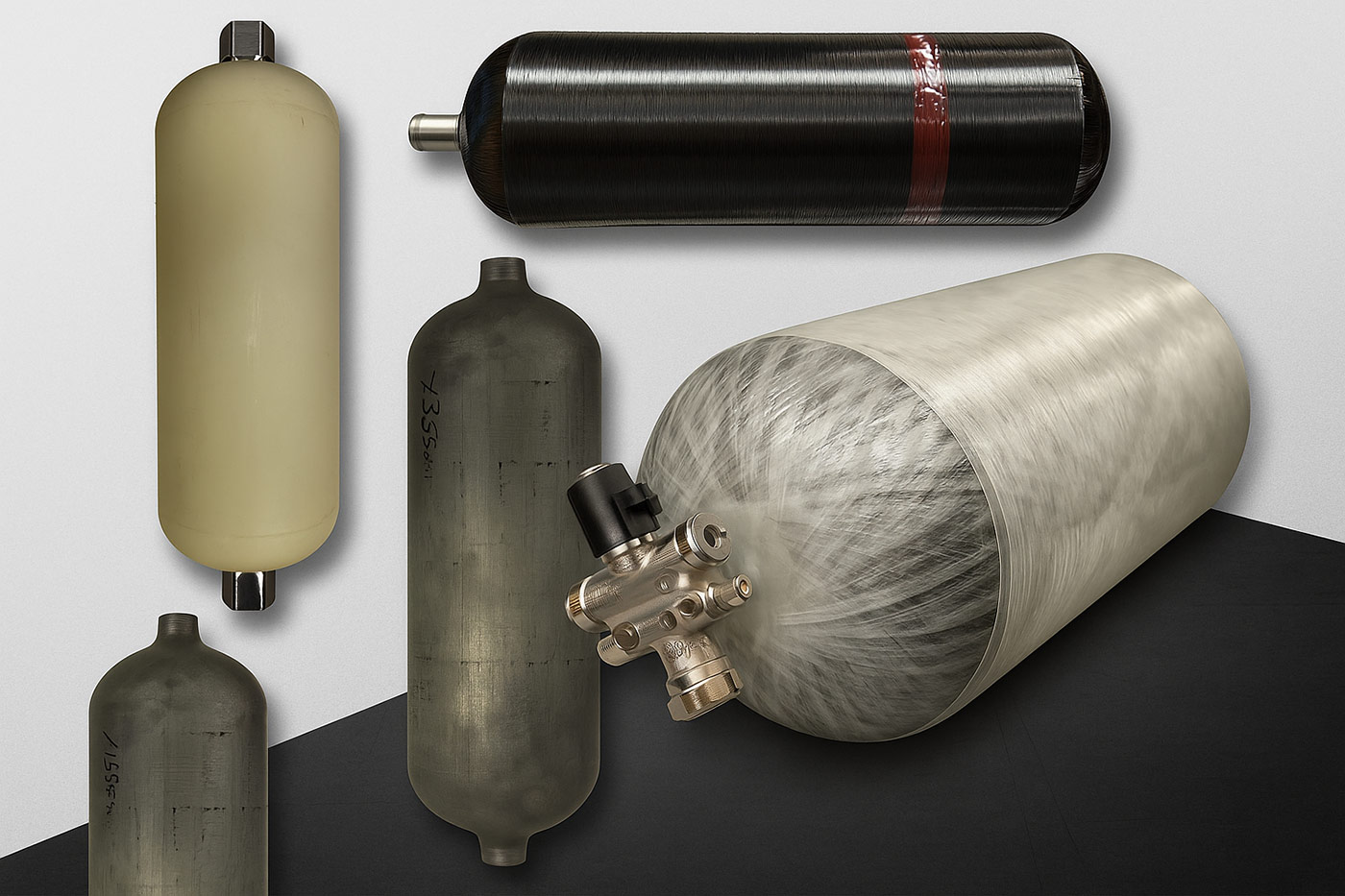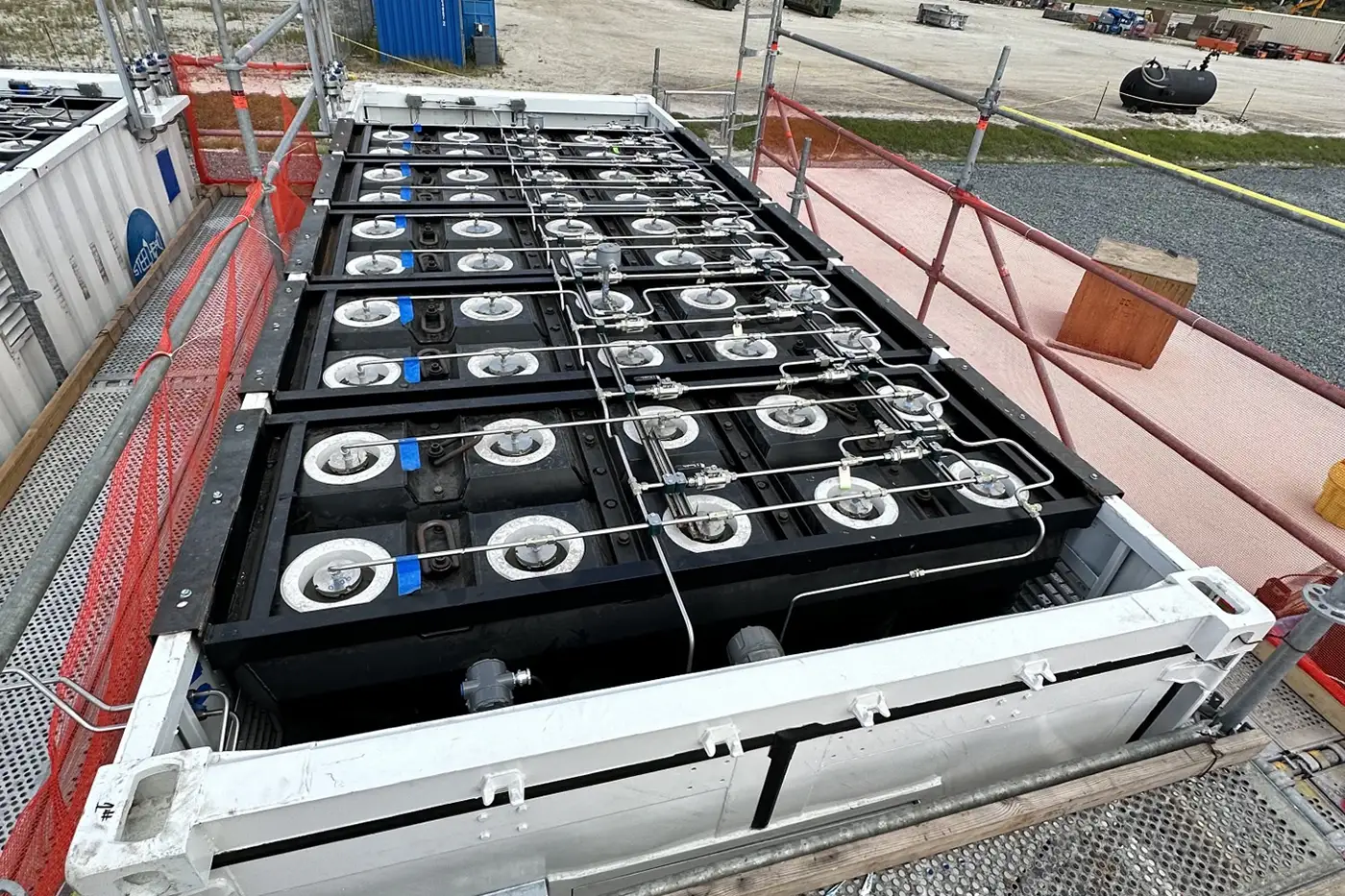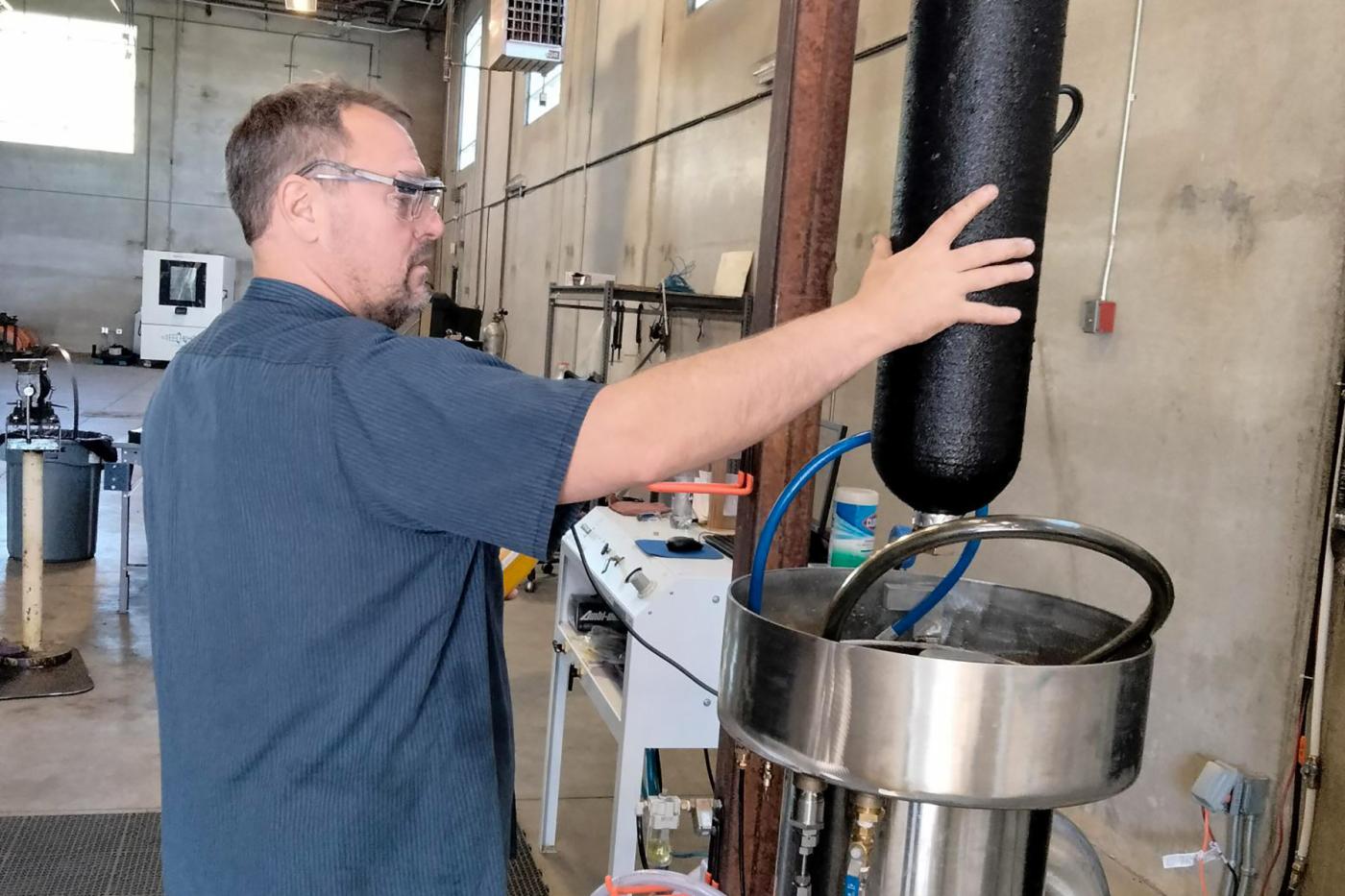Industries We Serve
Steelhead Composites supports the rapidly expanding hydrogen and clean energy sectors with advanced composite pressure vessel technology. Our systems provide safe, efficient, and scalable storage solutions for hydrogen production, distribution, and renewable energy integration.
- Hydrogen Fueling Stations
- Electrolyzer and Renewable Energy Systems
- Grid-Scale and Backup Energy Storage
- Hydrogen Transport and Distribution Networks
- Green Ammonia Production Facilities
- Power Generation and Hybrid Fuel Systems
- Research and Development Laboratories
- Decentralized and Modular Energy Hubs

Hydrogen adoption is accelerating, demanding safe and efficient storage solutions that scale with modern energy infrastructure. Steelhead Composites provides composite overwrapped pressure vessels (COPVs) engineered for high-pressure hydrogen storage across ground stations, mobile transport, and renewable energy hubs. Our advanced liner technology resists hydrogen permeation and embrittlement, ensuring long-term durability under demanding service cycles.
With compliance to ASME, ISO, DOT, and PED standards, Steelhead’s vessels are trusted for fueling stations, electrolyzer buffering, and green ammonia production. Modular, mobile systems support decentralized energy deployment, while recertification services extend vessel life and reduce costs. Steelhead enables the hydrogen economy with safe, flexible, and future-ready storage solutions.
Challenges
Solutions and Recommendations
Steelhead’s ground-based COPV systems offer high-capacity, stationary hydrogen storage for refueling stations, electrolyzer buffering, and grid-scale energy storage. These vessels are optimized for safety, footprint efficiency, and long-term durability, making them ideal for both urban and industrial applications.
Our mobile hydrogen storage solutions include trailer-mounted and skid-based systems that are DOT-compliant and field-proven. These allow for safe, efficient hydrogen delivery to off-grid locations, temporary installations, or modular energy hubs—supporting decentralized clean energy deployment.
Steelhead’s proprietary liner technologies are engineered to resist hydrogen permeation and embrittlement. Using advanced polymers and precision manufacturing, our liners ensure structural integrity and gas-tight performance under extreme pressure cycles—critical for long-term hydrogen storage.
To maximize ROI and sustainability, Steelhead offers recertification services that extend the operational life of hydrogen vessels. Our process includes inspection, testing, and documentation to ensure continued compliance with evolving safety standards—ideal for legacy systems and cost-sensitive projects.
Relevant Projects

Hydrogen buffer solutions for natural gas applications and hydrogen power plants.
Steelhead has deployed hybrid storage systems that buffer hydrogen alongside natural gas, enabling flexible fuel switching and emissions reduction in power generation.

Hydrogen storage for hydrogen generation systems.
Our vessels are integrated into on-site hydrogen production systems, supporting clean fuel generation for industrial, transportation, and backup power applications.

Ground storage buffer systems for green ammonia production.
Steelhead’s pressure vessels are used to store hydrogen for conversion into green ammonia—a key pathway for decarbonizing agriculture and chemical manufacturing.

Research and development micro systems.
We support R&D institutions with compact, high-performance hydrogen storage systems for testing fuel cells, electrolyzers, and next-gen energy technologies.






